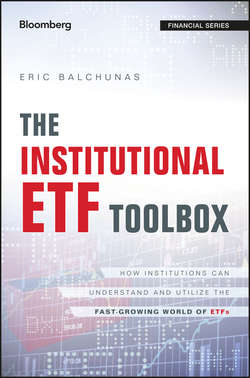Читать книгу The Institutional ETF Toolbox - Balchunas Eric - Страница 17
На сайте Литреса книга снята с продажи.
SECTION I
The ETF Phenomenon
CHAPTER 1
Why Are ETFs So Popular?
No Emotion
ОглавлениеMaking an investment strategy is easy. Sticking to it is hard. This is because things change. Portfolio managers can get swept away in trends, groupthink, and fear and emotion. An ETF is immune to all that, and this is an advantage. This is a trait the ETF shares with index funds.
An ETF is programmed to do nothing but track the index. They are like those spider robots from Minority Report that mindlessly fulfill their duty. ETF portfolio managers follow the rules dictated by the index to deliver index-like results. The holdings and allocations inside the ETF are generally outside the control of subjective, emotional, vulnerable humans. The ETF isn’t reading the Financial Times or watching CNBC. It doesn’t even have a Twitter account. It just does its best to follow the index returns by adhering to the index rules. Ironically, this robotic, passive functionality is highly useful to someone who is actively managing money.
This advantage relies on the indexes having solid rules that they stick to. For the most part, indexes simply do not change their rules even when the pressure builds up because of some hot trend.
“If we have some rule and we change it overnight, we have riots on our hands. There are situations that naturally happen in the capital markets, which put those rules under pressure, but they are relatively rare. People like what we do to be stable and reliable, and we can’t just change the rules on them at the drop of a hat.”
C. D. Baer Pettit, MSCI
